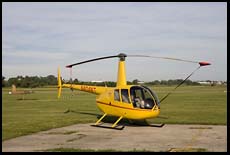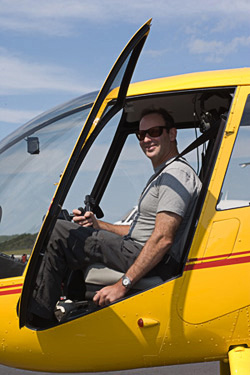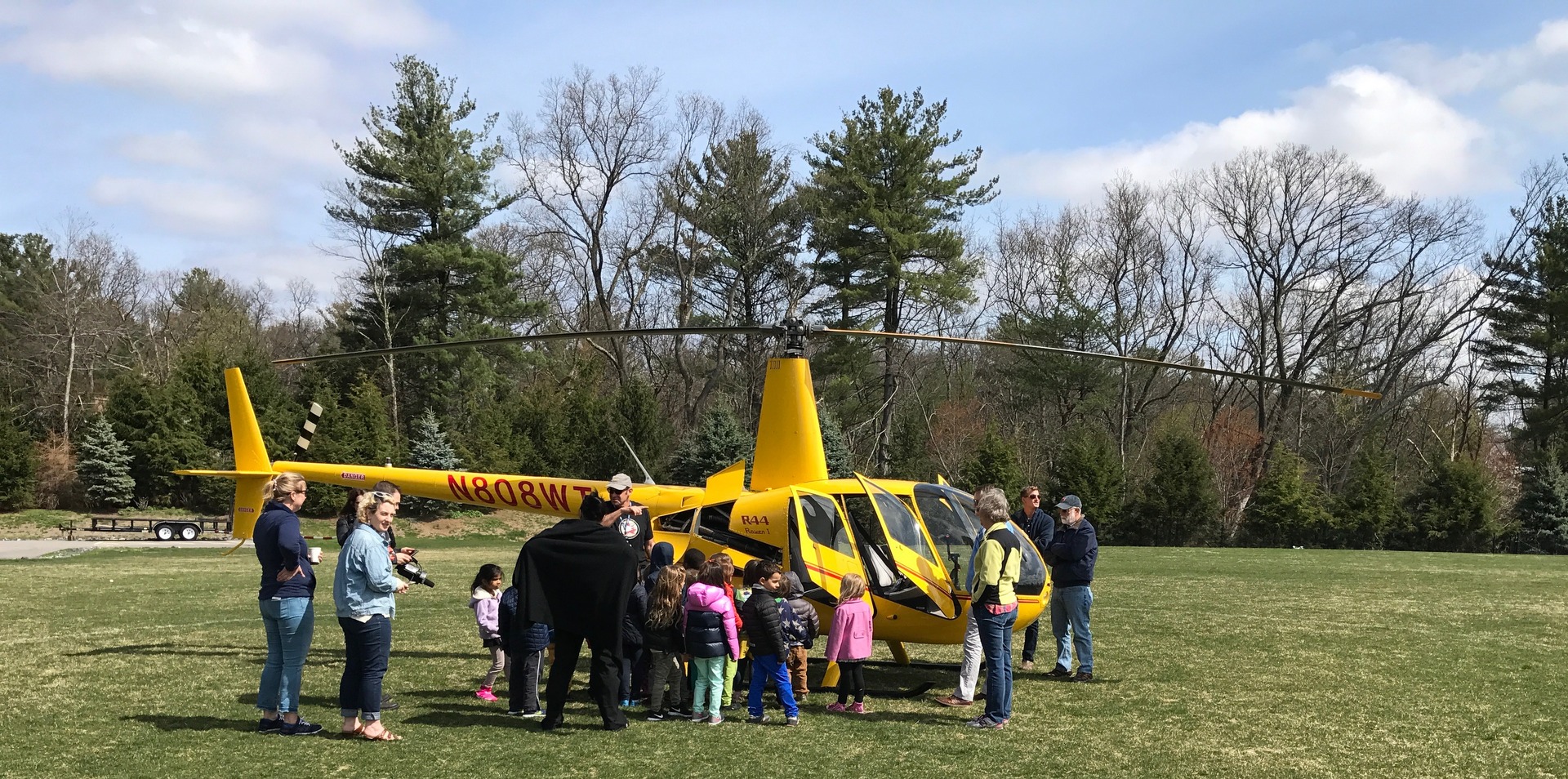
|
Helicopter Demonstration for Schools
from Philip Greenspun and East Coast Aero Club; updated October 2019
Site Home : Flying : One Article
|
 You've got an athletic field; we've got two helicopters and six
instructors. We'll come to you, show the students the helicopter, and
teach age-appropriate lessons on aerodynamics, qualitative physics,
and the engineering and mathematics around helicopters and helicopter
flying.
You've got an athletic field; we've got two helicopters and six
instructors. We'll come to you, show the students the helicopter, and
teach age-appropriate lessons on aerodynamics, qualitative physics,
and the engineering and mathematics around helicopters and helicopter
flying.
If your school is within about 50 miles of our home base of Hanscom
Field (Bedford, Massachusetts), keep reading...
How it Works
We can bring up to three teachers, all FAA-certificated pilots and/or
instructors, to your school. Once we land, typically in a soccer or
baseball field, and shut down (three minutes), we can show groups of
students the helicopter up-close. If desired, we can then come into
your classrooms and explain how helicopters work, the process of
becoming a pilot, and talk about what people need to study in order to
become pilots or aeronautical engineers.
If we just land, do a show-and-tell at the helicopter, and depart, we
can fit it all into 30-45 minutes.
A schedule that worked well at a K-5 school with about 425 students
was the following:
- landing, shutdown, and greeting with entire school: 10 minutes
- Grade 5: 20 minutes, with senior instructor explaining concepts
for 10 minutes and then smaller groups rotate among locations around
the helicopter where instructors explain the various components
- Grade 4: 15 minutes
- Grade K-3: 10 minutes each grade, starting about 25' from the
helicopter for 5 minutes where everyone can see the junior instructor
manipulating the collective and cyclic while the senior instructor
explains how the blades are twisting; then about 5 minutes up close
with the helicopter
- everyone (timed for end of school day): 10 minutes to startup and takeoff
Total time: 1.5 hours.
Our qualifications
Most of us at East Coast Aero Club have a technical background as well
as our FAA training. My own background is typical. I hold an FAA
Airline Transport Pilot certificate with multi-engine, single-engine
seaplane, and helicopter ratings. I have more than 4500 hours of
flying experience including trips from Boston to Alaska (twice),
Mexico, the Caribbean, Labrador-Newfoundland, and back. I flew
50-seat regional jets for a Delta Airlines subsidiary and have been a
flight instructor since 2005 at East Coast Aero Club. I studied
mathematics and engineering at MIT, culminating in a PhD in Electrical
Engineering and Computer Science. In addition to experience teaching
MIT undergraduates, I have been a volunteer tutor for students in
three Massachusetts public schools.
To get a feel for what our lectures are like, see the videos captured
by MIT Video Productions linked
from the ground school that we
taught for the Department of Aeronautics and Astronautics.
The Helicopter
We will show up in a a Robinson R44
helicopter. This is the world's best-selling helicopter, with
hundreds coming off the assembly line in Torrance, California every
year.
Safety
A student pilot could safely land a helicopter in a soccer field. It
begins to get more challenging as the cleared area for landing shrinks
down to the size of a tennis court. We ask that you provide us with at
least a baseball field. The actual spot where we set down need not be
large, perhaps the size of four parking spaces.
We ask that you arrange students so that we don't have to fly over
their heads when landing or taking off. We will want to be landing and
departing into the wind and not over the tallest trees, for
example. Mostly don't surround the landing area with people on all
sides! Also, please tell students not to approach the helicopter while the
rotors are spinning.
We have at least a standard $1 million liability insurance policy on
our helicopters.
The Cost
We do not charge to come to your school, whether public or private. My
most vivid memory from elementary school (early 1970s) was the day
that the local TV station landed their Bell 47 on our athletic
fields. Giving your students the experience of seeing a helicopter
land, hover, and take off again will be our reward.
If we go into your classrooms we ask that you assign an adult to
safeguard the helicopter from overly curious fingers! We love kids,
but don't want them hanging on the tail rotor.
How does it look?
The photo below is from a visit to the Meadowbrook School in Weston,
Massachusetts. Jonathan Schmid was the primary organizer and he can
tell you how he organized everything on the school's end.

More
Text Copyright 2016-2019 Philip
Greenspun. Photo at top right
by Ellis Vener. Photo at the
Meadowbrook School courtesy Jonathan Schmid.
philg@mit.edu


 You've got an athletic field; we've got two helicopters and six
instructors. We'll come to you, show the students the helicopter, and
teach age-appropriate lessons on aerodynamics, qualitative physics,
and the engineering and mathematics around helicopters and helicopter
flying.
You've got an athletic field; we've got two helicopters and six
instructors. We'll come to you, show the students the helicopter, and
teach age-appropriate lessons on aerodynamics, qualitative physics,
and the engineering and mathematics around helicopters and helicopter
flying.
